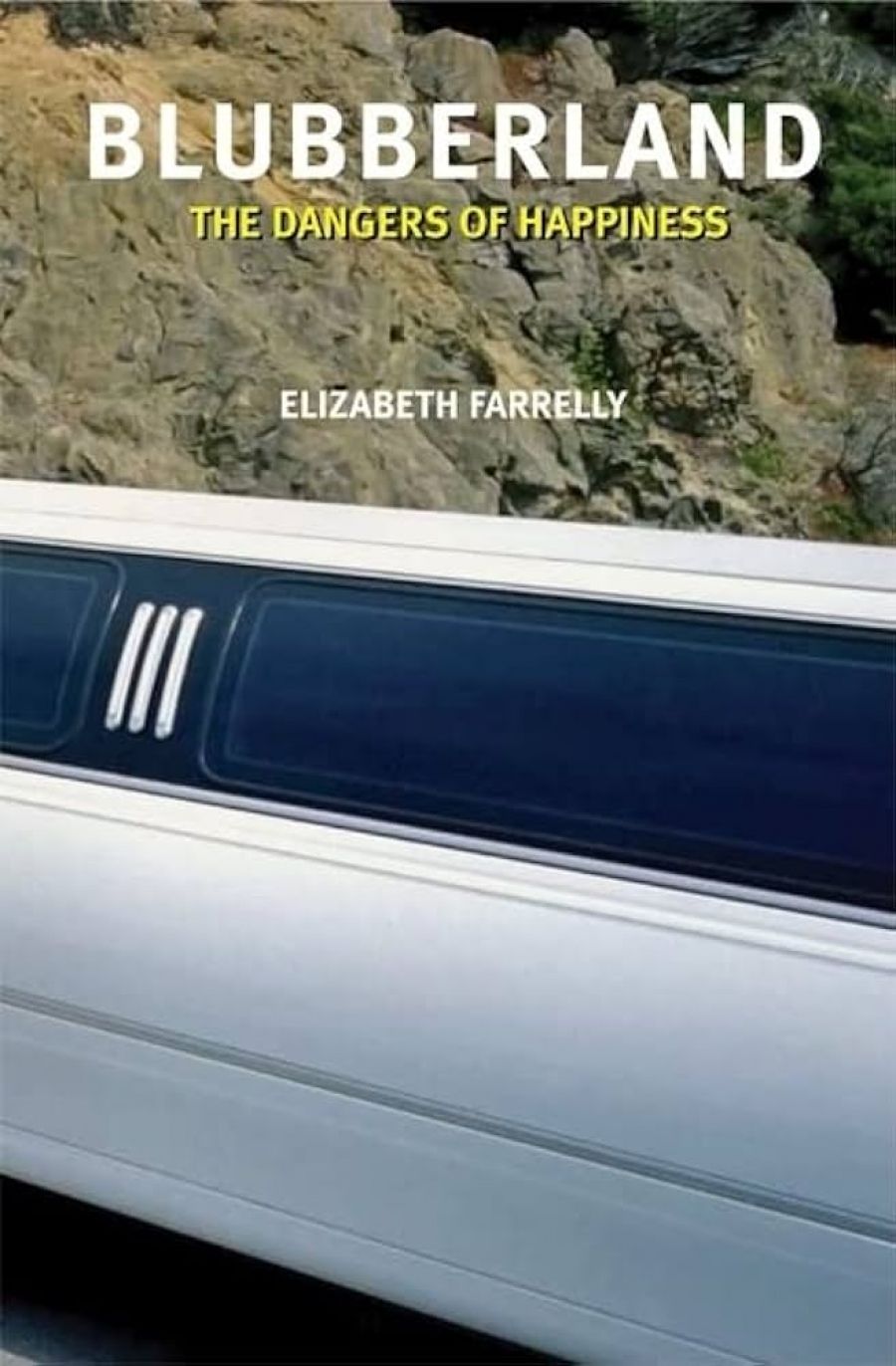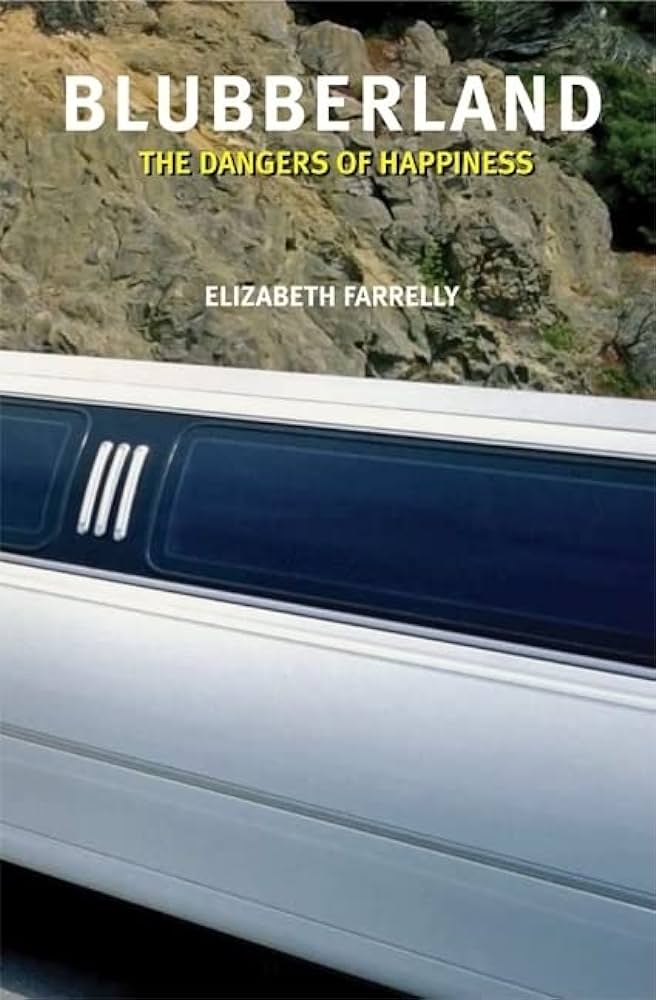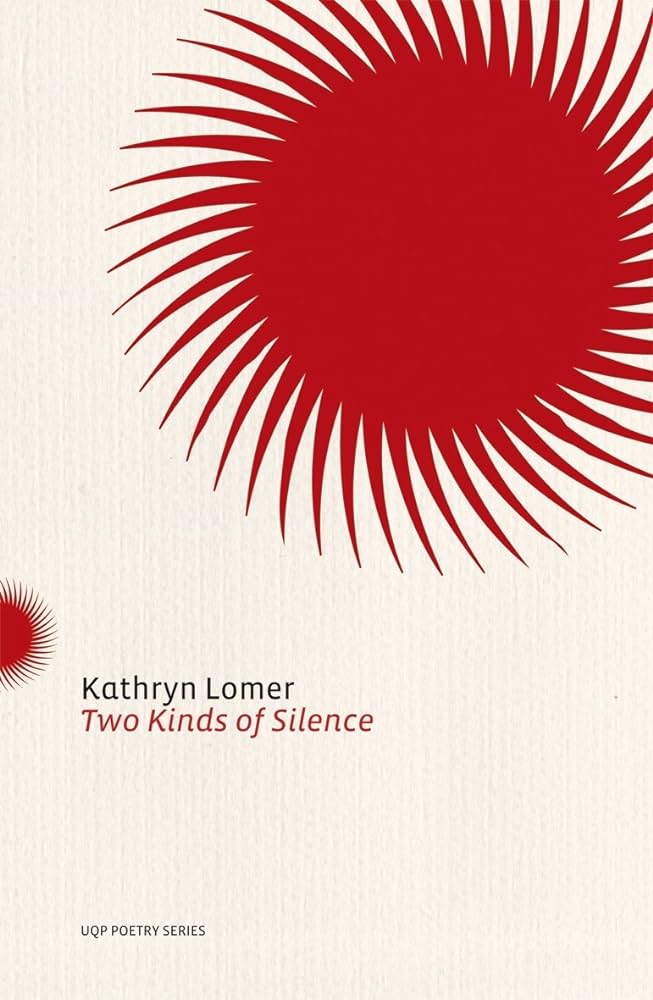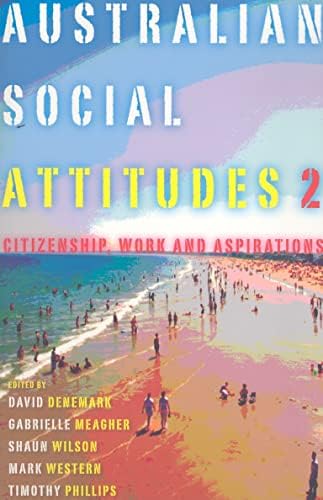
- Free Article: No
- Contents Category: Non-fiction
- Custom Article Title: Three non-fiction books
- Review Article: Yes
- Article Title: Three non-fiction books
- Online Only: No
- Custom Highlight Text:
In this fascinating and irritating book, Elizabeth Farrelly hits out at almost everything about the modern world. She is an architect, and urban sprawl and ugly buildings are her bêtes noires, though obesity, kitsch and fakery also attract her coruscating attention.
Blubberland is a curious mixture of diatribe and philosophical treatise on cultural theory. Farrelly makes many good points: tight-knit cities, for example, are more energy-efficient than sprawling suburbs, and the ‘sea-change’ fad destroys beauty spots with little increase in happiness. She wonders ‘[w]hy we demand a built lifestyle whose habitual over-indulgence is, by even the standards of our parents’ generation, extraordinary? … Why these houses, and the suburbs full of them, are so ugly? Is it an aesthetic or a moral repugnance?
- Book 1 Title: Blubberland
- Book 1 Subtitle: The danger of happiness
- Book 1 Biblio: New South, $29.95 pb, 224 pp
- Book 1 Cover Small (400 x 600):

- Book 1 Cover (800 x 1200):

- Book 2 Title: Two Kinds of Silence
- Book 2 Biblio: UQP, $24.95 pb, 96 pp
- Book 2 Cover Small (400 x 600):

- Book 2 Cover (800 x 1200):

- Book 3 Title: Australian Social Attitudes 2
- Book 3 Subtitle: Citizenship, work and aspirations
- Book 3 Biblio: UNSW Press, $59.95 pb, 320 pp
- Book 3 Cover Small (400 x 600):

- Book 3 Cover (800 x 1200):

Farrelly ends with a utopian vision of a new Australia built in the north-west once the eastern seaboard has become uninhabitable through climate change. People, although ‘still as shortsighted and greedy as ever’, will develop a taste for high-density living, cycling, organic food and the all-night café culture. In other words, ‘we’ will, improbably, become just like Farrelly herself. Blubberland, in many ways engaging and intellectually challenging, founders on this highly debatable apocalyptic golden-ageism.
A passion to explore nature’s mysteries and mysterious chemistry between human beings characterises Kathryn Lomer’s poetry. There are different kinds of silence here: the world of nature offers regenerative silence; human relationships create introspective silence, some- times disturbing, sometimes redemptive.
Mostly the poems in this new collection are energetic, yielding vibrant layers of thought and emotion. Witty linguistic inventiveness sparkles: ‘Greenwich means time’ … ‘Time to kill, you say, / as if your clock has transgressed’ (‘Time Zones’). Unusual semantics tantalise: ‘the whiffletree of a single word’; complex ideas surface, intellectually challenging, sensually powerful: ‘big thoughts / in the small hours, / pestle pounding to pulverise / in the mortar / of the hard rock heart’ (‘Gnamma’).
Humour lightens poems such as ‘On the Tongue’: ‘Tongues / will wag, my mother used to say / to her teenage daughter, home late’; but darkly counterpointed : ‘Her tongue now a fistful of dust, / mine unable to answer back.’ In ‘Sleeping Beauty’, there is wry insight: ‘The dress is an hourglass – / strapless, backless, reckless – … off-the-peg love’ for ‘easy-care, drip-dry hearts’. Rhythm is often effective, but some-times, as in the final stanza of ‘Time Zones’, it stalls.
Lomer’s poems are often personal narratives of memory and desire, universalised through ‘objective correlatives’ derived from nature and places, especially the coastline and bush of Tasmania. Some are moving tributes to parents (‘Rolling Pin’ and ‘A List of Things to Do This Winter’); others celebrate biological and emotional closeness between women, across generations (‘Omphalos’) and across cultures (‘Apprentice Geisha’).
These are tough but tender poems, erudite without being academic; they evoke wonder and provoke curiosity. Like the mother in ‘Rolling Pin’, one feels ‘there’s so much to learn’.
This book examines data drawn from the second Australian Survey of Social Attitudes (AuSSA) that was undertaken through the ACSPRI Centre for Social Research at the Australian National University in late 2005 and early 2006. AuSSA was large in scope and has provided an extensive source of data on the nation’s attitudes. Each chapter of the book deals with a different topic, ranging from defence to social security and financial issues. Some of the findings are surprising: few would have predicted, for example, that health care, social inequality and environmental damage are among the top five current concerns of Australians. Apparently, we are not as materialistic as we thought. Nor are we quite as frightened as we thought, with terrorism ranking eighth out of eighteen issues surveyed. Nevertheless, over three quarters of those surveyed considered that Australia’s involvement in the Iraq War has increased the threat of terrorism, in sound rejection of the stance of the Howard government. Not surprisingly, about sixty per cent of respondents agreed that ‘the government doesn’t care what people like me think’.
In other respects, the findings of AuSSA need to be treated with some caution. Sixty-three per cent of respondents agreed that it is important to help people in other countries who are worse off than themselves, yet, as the editors point out, such a response does not necessarily translate into practice; for example, when we actually come into contact with needy foreigners. While sixty per cent of workers surveyed said they would enjoy a paid job even if they did not need the money, only a few agreed that they would turn down another job that paid significantly more in order to remain with their current employer. The analyses in Australian Social Attitudes 2 – and the data that they are based upon – are strongest when they consider what the experience of respondents has been rather than what it might be. To this extent, the book offers a valuable insight into the national psyche.


Comments powered by CComment